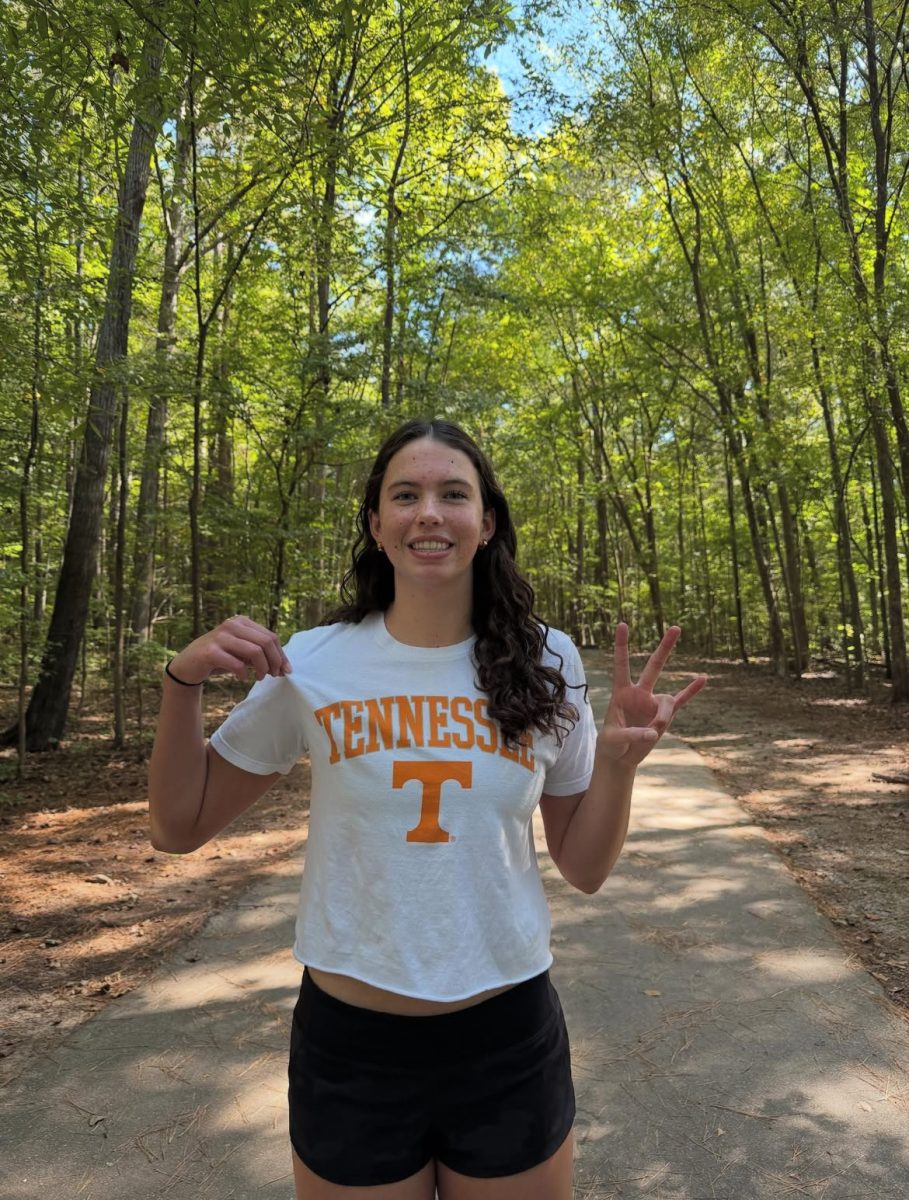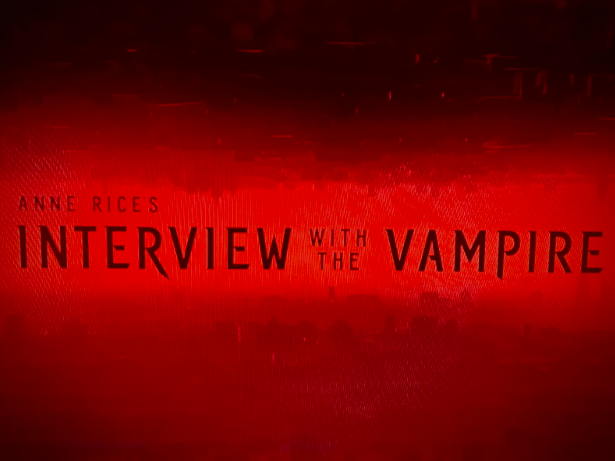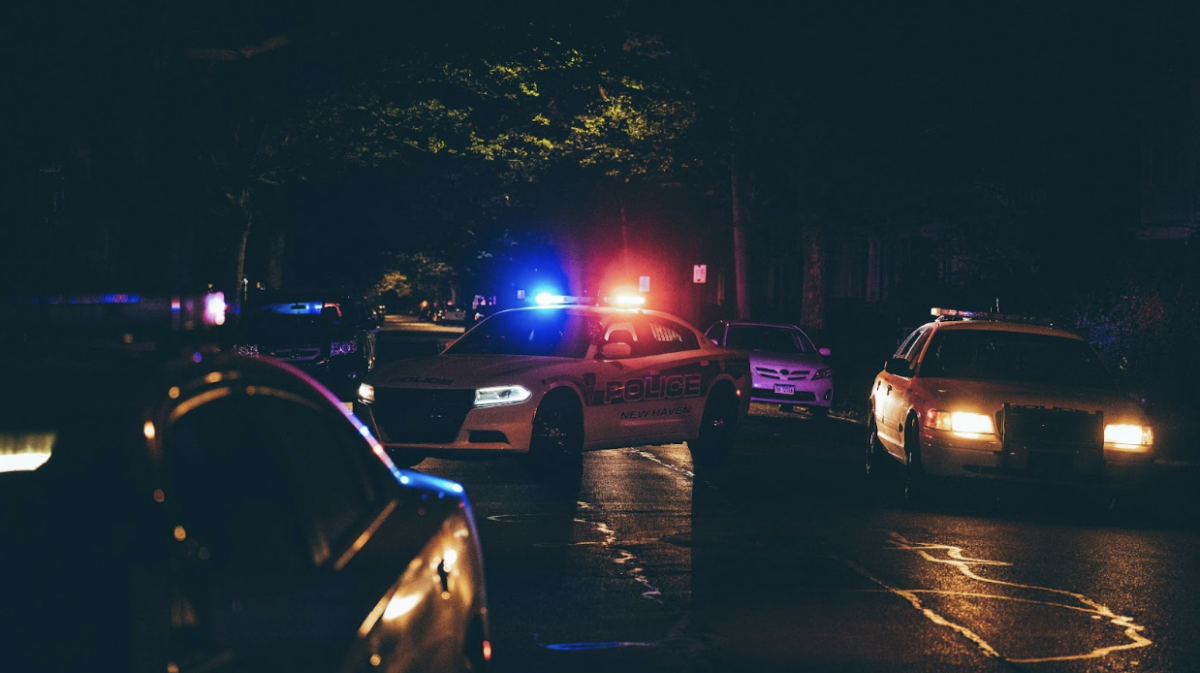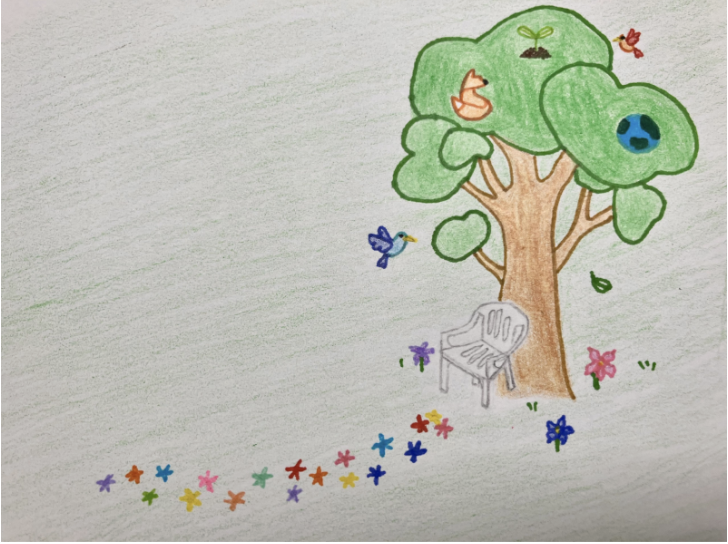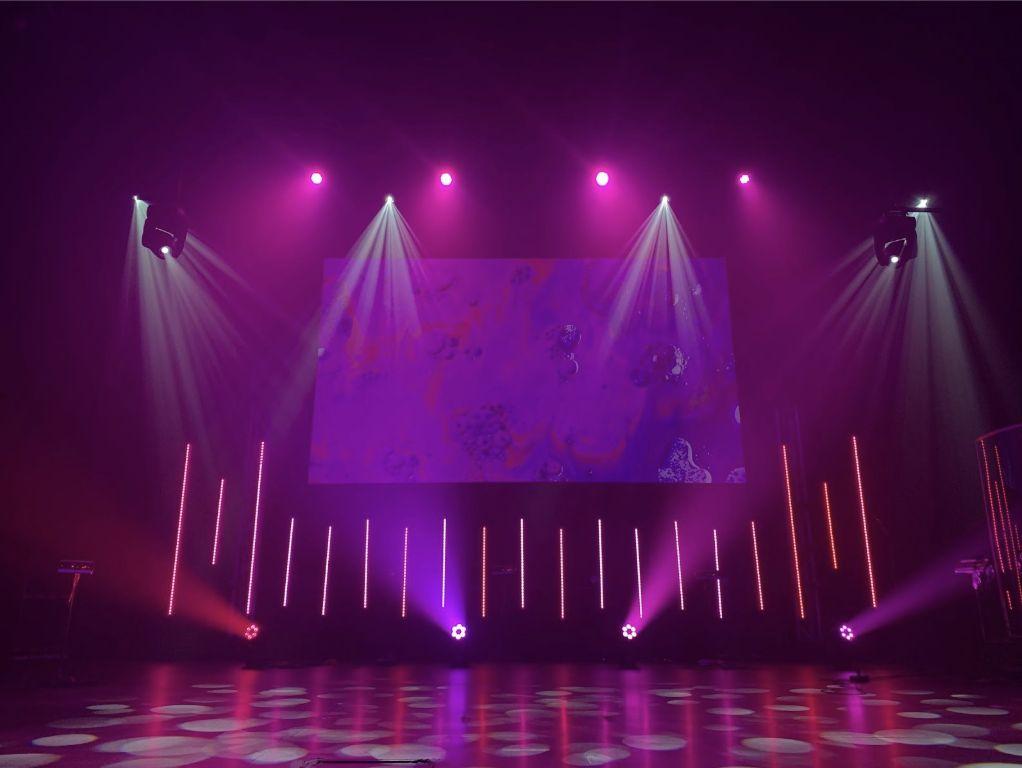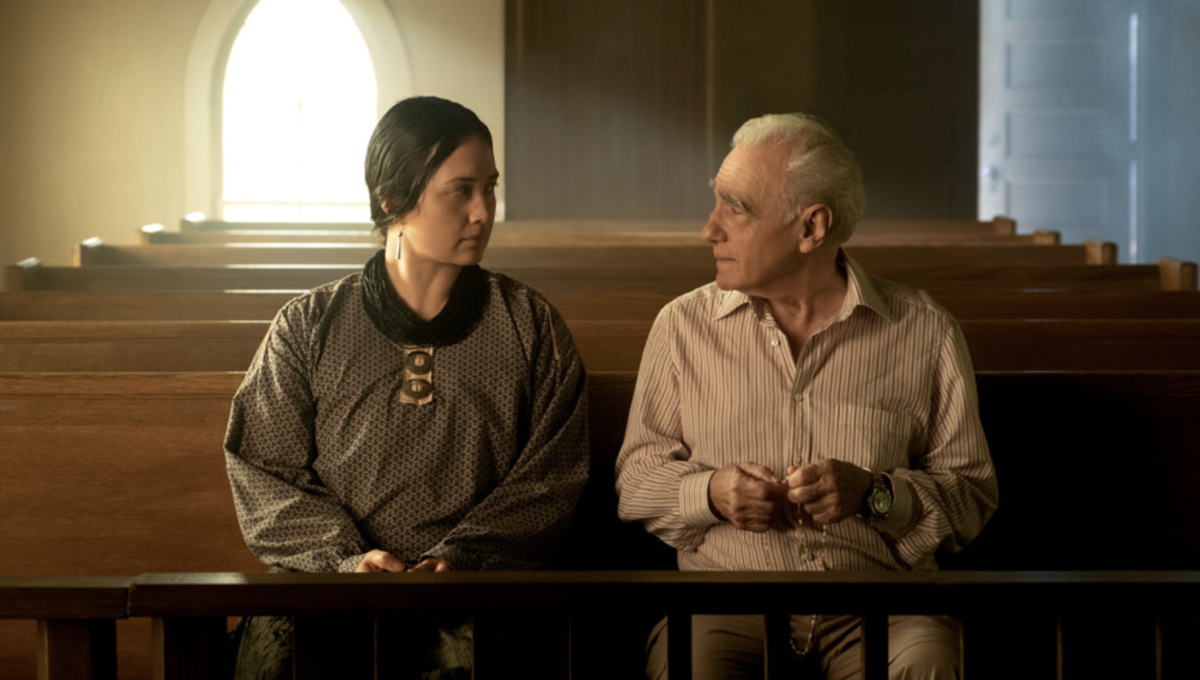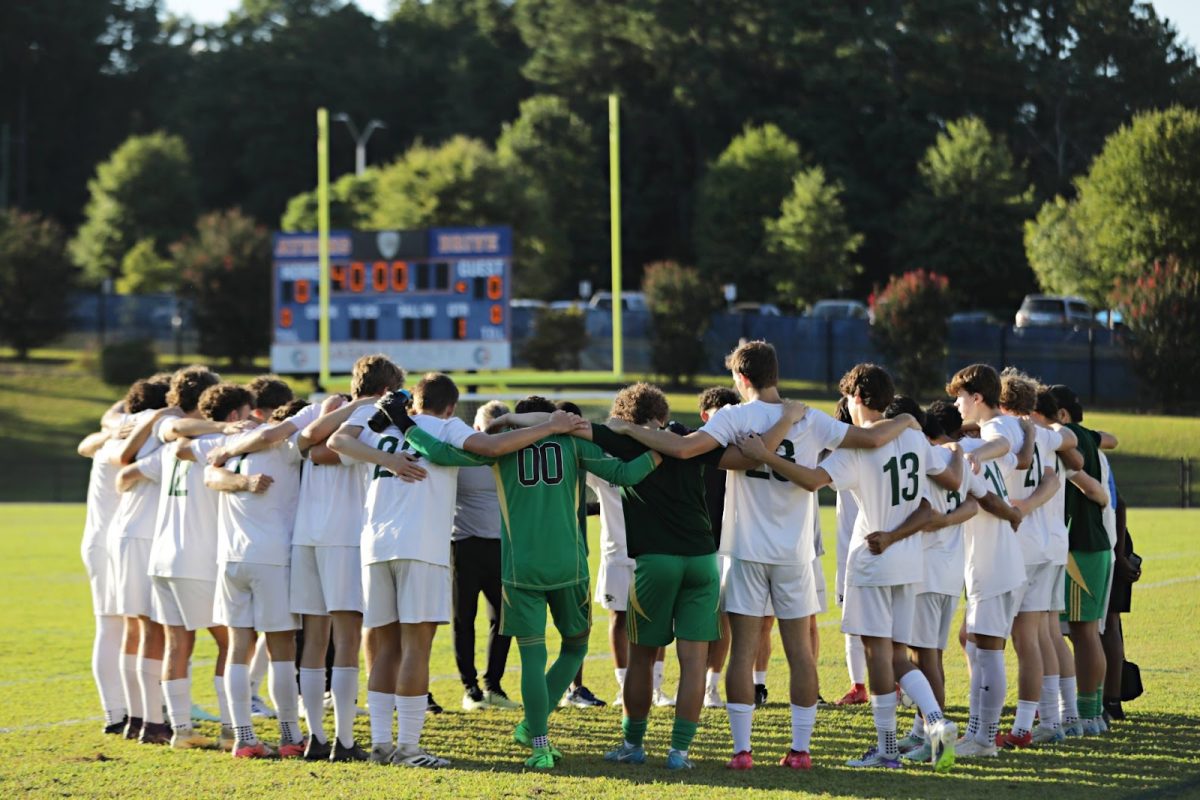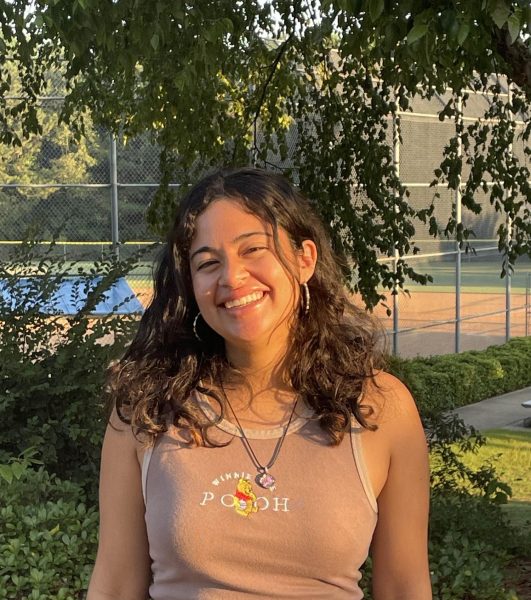Ask a Green Hope student about Lily Gladstone’s recent Golden Globes win, and you are bound to receive quizzical looks or a response similar to, “Who is that?” While the entrance of new and upcoming Indigenous American actress Lily Gladstone is a prevalent topic amongst Hollywood and movie lovers alike, her influence has yet to reach the general public.
Upon the release of “Killers of The Flower Moon” in late 2023, Martin Scorsese and Leonardo DiCaprio – a power-duo who have made numerous blockbusters together – made their return on the silver screen. Although the film is filled with seasoned actors and acclaimed stars among the likes of Scorsese, DiCaprio and Robert De Niro, Gladstone was a fresh face pulled from the indie film scene for the highly anticipated picture.
Gladstone stars beside DiCaprio in this western period piece as Mollie Burkhart, often described by numerous industry journals as the “heart” and “conscience” of the story amongst the morally deficit characters of Ernest Burkhart (DiCaprio) and his uncle William Hale (De Niro). Gladstone’s character and her portrayal of Burkhart have turned heads within the industry this awards season, and is anticipated to continue to do so.
For her impressive breakout role, Gladstone has gained a plethora of awards recognition, the most recent being her Golden Globes win for Best Actress in a Motion Picture. This makes her the first Indigenous person in history to win this award.
When accepting the award, Gladstone introduced herself in the Blackfeet native language which she learned living on a Blackfeet Native American reservation in Browning, Montana. She explained that this was one of the first things she said to people when introducing herself. The introduction made many Native Americans across the country feel seen while also introducing a piece of culture into a largely homogenous and white Hollywood.
This is especially significant considering Hollywood’s history of misrepresenting Indigenous Americans in film. Many old Hollywood movies, especially western films, frequently depicted Native Americans as “savages” or the main antagonists of their stories. In an effort to appease to white audiences and colonial values, Hollywood filled its similarly manufactured stories with carefully developed white heroes and derogatory, one-dimensional depictions of Indigenous American villains.
At the 1973 Oscars, when Marlon Brando – an American actor widely known for introducing groundbreaking acting techniques to Hollywood– won his statuette for Best Actor in a Motion Picture, he refused to accept the title. Instead, he sent a member of an Apache tribe and president of the National Native American Affirmative Image Committee, Sacheen Littlefeather, to speak in his place at the ceremony. In the speech, she claimed Brando could not accept the award because of “the treatment of American Indians today by the film industry.”
Her message was criticized heavily amongst audiences, especially at the Oscars when infamous western film star Clint Eastwood walked on stage to present an award later in the night and quipped, “I don’t know if I should present this award on behalf of all the cowboys shot in all the John Ford westerns over the years.” Scattered applause followed his disrespectful jab, provoking audiences to further critique Littlefeather’s message.
In June of the same year, in an interview on The Dick Cavett Show, Brando would explain his intentions of sending Littlefeather in his place at the Oscars, claiming that he wanted to draw attention to discrimination and vilification of all ethnic groups in American movies. “I don’t think that people, generally, realize what the motion picture industry has done to the American Indian. As a matter of fact, [what they’ve done to] all ethnic groups, all minorities, all non-whites.”
As the 2024 Academy Awards approach more than half a century later, Lily Gladstone is a beacon of hope for a rapidly changing industry. Many claim that she has great potential to be the first Indigenous American to be nominated for an Oscar. If such happens, it’ll be one step up from a century of misrepresentation, mistreatment and villainization Indigenous Americans have faced since the beginning of Hollywood as we know it.
And to younger viewers, Lily Gladstone’s debut to Hollywood can introduce a new image of Native Americans that can foster stories that are made to inspire future generations, as they watch the vibrant cultures of Native Americans depicted in positive lights, rather than harmful stereotypes. In this, Gladstone proves to be one of the many pioneers of a new Hollywood and that is something that should be recognized on a level inside and out of the glitz and glamour of the film industry.


































